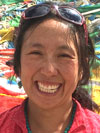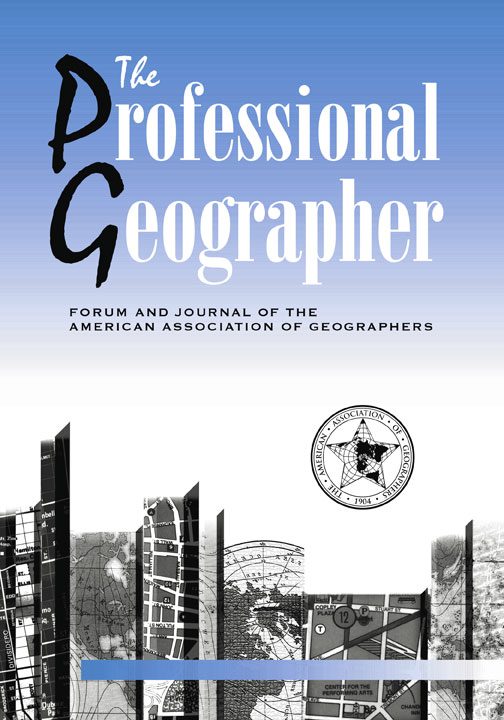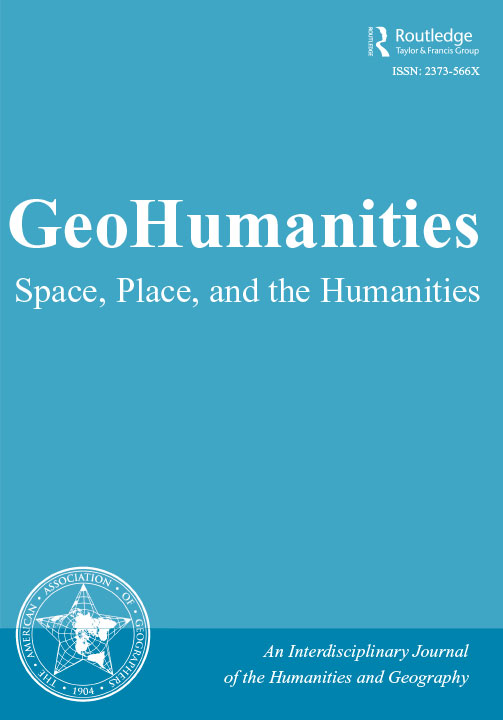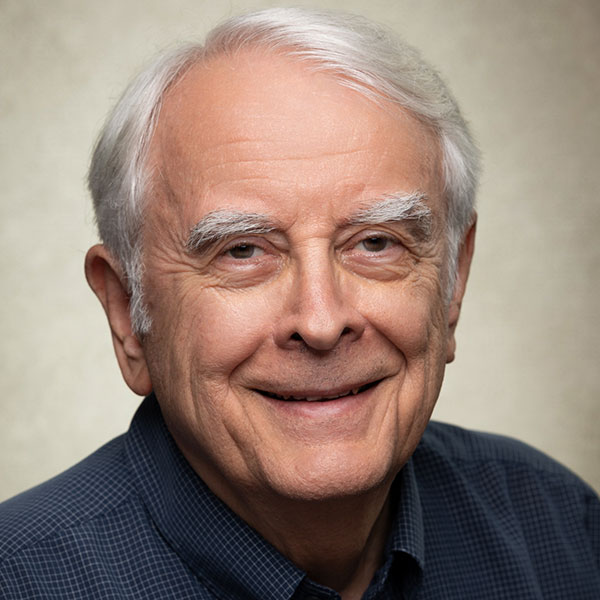Geographers and Redistricting
 When I taught my Geography of China class in fall 2019, I had a student from the PRC whom I remember as being particularly open-minded and eager to learn. One day, after I lectured about the massive Hong Kong protests for universal suffrage and the principle of one-person one-vote that were occurring, he asked, nonplussed, “Why do they care so much about one-person one-vote? What’s the big deal? Why bother protesting for that?” He was genuinely curious about what could motivate so many people to expend so much effort on something that didn’t seem to him to be much preferable to the alternative. I explained the benefits of representative and liberal democracy, accountability of one’s elected officials, and the importance of citizens having a real voice in governance, but I could see the skepticism from him and other international students about what US democracy was looking like to the rest of the world.
When I taught my Geography of China class in fall 2019, I had a student from the PRC whom I remember as being particularly open-minded and eager to learn. One day, after I lectured about the massive Hong Kong protests for universal suffrage and the principle of one-person one-vote that were occurring, he asked, nonplussed, “Why do they care so much about one-person one-vote? What’s the big deal? Why bother protesting for that?” He was genuinely curious about what could motivate so many people to expend so much effort on something that didn’t seem to him to be much preferable to the alternative. I explained the benefits of representative and liberal democracy, accountability of one’s elected officials, and the importance of citizens having a real voice in governance, but I could see the skepticism from him and other international students about what US democracy was looking like to the rest of the world.
There’s also a slightly different way to interpret his question: why were the people of Hong Kong struggling so hard for an ideal that has proven elusive even for the world’s self-proclaimed champion of democracy? Consider the first meaning of “one-person one-vote” – universal suffrage. Aside from the obvious fact that voting in the US was originally limited to only white men with property, this year has seen an unprecedented wave of over four hundred voter suppression bills introduced in state legislatures across the country. Georgia has notoriously made it illegal for anyone other than a poll worker to give food or water to anyone waiting in line to vote, disproportionately affecting minority communities where wait times are very long and barriers to voting formidable. Other bills make it more difficult to register, establish strict photo ID laws, and limit access to voting by restricting mail-in ballots, absentee ballots, early voting, number of polling sites, and hours polling sites are open. These and other measures disproportionately affect people of color, the elderly, and those with disabilities. In one 2016 inspection, nearly two-thirds of polling places had at least one impediment for those with disabilities, up from less than one-half in 2008. Many Native Americans who live on reservations do not have traditional street addresses, causing their voter registration applications to be rejected; furthermore, because of increasing limits on polling sites and drop boxes, some Native Americans have had to drive up to 150 miles in order to vote.
Beyond these obstacles to voting access that belie the idea of universal suffrage, however, there is also a second meaning to “one-person one-vote”: the principle that any one person’s voting power should be roughly equivalent to another’s. Representation in the US Senate does not adhere to this principle (nor the Electoral College for the selection of the president): a voter in rural Vermont effectively has sixty times the clout of a voter in California. The House of Representatives, though, is supposed to be the people’s house, with representation proportional to the population (though every state must have at least one representative). It is for this reason that there is a decennial census, in order to apportion Congressional representatives based on population change. Since the number of House seats was frozen at 435 by an act of Congress in 1929, reapportionment has meant the movement of Congressional seats from slow-growing to faster-growing states. Recent scholarship in political geography suggests that this process has disadvantaged lower income, less educated, and minority populations. The findings of the 2020 Census, delayed due to the pandemic, have resulted in seven states losing one seat each, five states gaining one seat each, and Texas gaining two seats.
After reapportionment comes redistricting: the drawing of electoral district boundaries for Congressional districts as well as state legislatures. The Constitution and the Equal Protection Clause of the 14th Amendment dictate that in any given state, congressional districts and state legislative districts must have equal populations. Redistricting must also follow the Voting Rights Act, which bars discrimination based on race (though it has been substantially gutted by 2013 and 2021 Supreme Court decisions). Beyond this, however, the actual drawing of districts is up to each state. Common criteria for districts, adopted by many states, include geographic compactness, contiguity, preservation of communities of interest, preservation of counties or other political subdivisions, and competitiveness.
Fair redistricting is indispensable to a healthy democratic republic. But what exactly is fair? This turns out to be a rather difficult question; it is much easier to see when things are blatantly not fair – when they don’t adhere to one-person one-vote in the second sense of equal representation. Gerrymandering is the term used to describe a configuration where district boundaries give unfair advantages to an incumbent, a political party (partisan gerrymandering), or another group. The portmanteau was coined in 1812 after a governor named Gerry signed into law a redistricting plan which looked like a salamander and was designed to keep his political party in power. Partisan gerrymandering has a long history in the US, with two of its most common tactics being “cracking” and “packing.” Cracking refers to spreading members of a political or ethnic/racial minority into many districts to ensure they cannot elect a representative of their choice, while packing is the concentration of voters of one type into one district, to reduce their overall influence. Although the strategies seem plain enough, interpretations can be contested in practice. In particular, in the 1990s, a wave of majority-minority districts was created to prevent or reverse racial discrimination caused by earlier gerrymandering. But these attempts to prevent cracking minority representation were seen by others as a form of packing.
Since the 1960s, there has been increasing litigation as well as citizen attention to the often highly partisan results of redistricting. One response has been the creation of Independent Redistricting Commissions (IRCs) to either oversee or delineate congressional and legislative boundaries. In addition, many states, regardless of whether they have IRCs, have opportunities for public comment and testimony, public hearings, public map submissions, and citizen review.
Here is where geographers come in – or, at least, should. After all, there are few things as geographical as the drawing of maps. Yet, though there continues to be research on electoral geography (for example see recent articles by Webster, Forest, and Rossiter et al.), most research on redistricting has been done by political scientists, mathematicians and lawyers. Even more relevant here is the fact that geographers have by and large been absent from the current redistricting process underway across the US. This is no doubt due in part to the fact that each state has a different process, making it harder to identify opportunities to get involved. It is for this reason that AAG is launching a virtual Redistricting Panel Series this month to equip geographers with the tools and knowledge to take action in their home states as district maps are redrawn. There will be panels for up to 15 states this month, organized by geographers and hosted on AAG’s virtual platform. Anyone is welcome to register for a panel, which will focus on the redistricting process of that particular state, how geographers can get involved, and why geospatial thinking is indispensable to the effort to create fair outcomes.
My own participation in a recent public hearing of the Colorado Independent Redistricting Commission confirmed just how relevant geographical considerations are – for example, in defining “communities of interest.” Preliminary maps had put several small mountain towns in western Boulder County into a large district that crossed county lines and was comprised of many mountain areas. In this version of redistricting, mountain towns tied to the ski industry were treated as a community of interest. But many at the hearing argued that in fact the more relevant community of interest is the watershed. “Everything flows downhill” said one participant: residents of the mountain towns come downhill for schools and jobs, much as the water in the reservoir flows east down to larger population centers. Others argued about the donut shape that the city of Boulder had been divided into for a state house district, suggesting that this split a community of interest that has developed around the issue of affordable housing. Others still argued that, given their concern about the health and environmental impacts of fracking, they should not be placed in a district with a majority pro-fracking and anti-regulation population. An exasperated IRC member asked several times how the speakers would draw the lines instead, given the requirements of equal population. A former county commissioner sympathized with the IRC, acknowledging the difficulty of their task: “One person’s ‘gerry’,” he noted, “is another person’s ‘mander.’”
I hope that AAG’s Redistricting Panel Series will inspire geographers to get involved, contributing their geospatial expertise and sensibilities to these extraordinarily important, and difficult, tasks. To see panels and register, visit this link.
DOI: 10.14433/2017.0099
Please note: The ideas expressed in the AAG President’s column are not necessarily the views of the AAG as a whole. This column is traditionally a space in which the president may talk about their views or focus during their tenure as president of AAG, or spotlight their areas of professional work. Please feel free to email the president directly at emily [dot] yeh [at] colorado [dot] edu to enable a constructive discussion.


